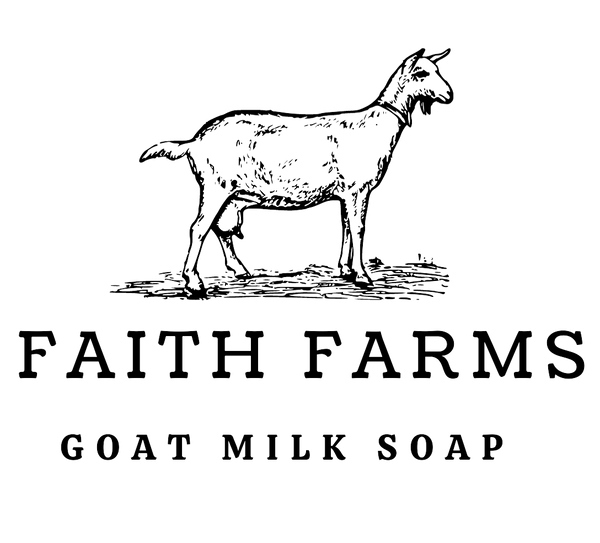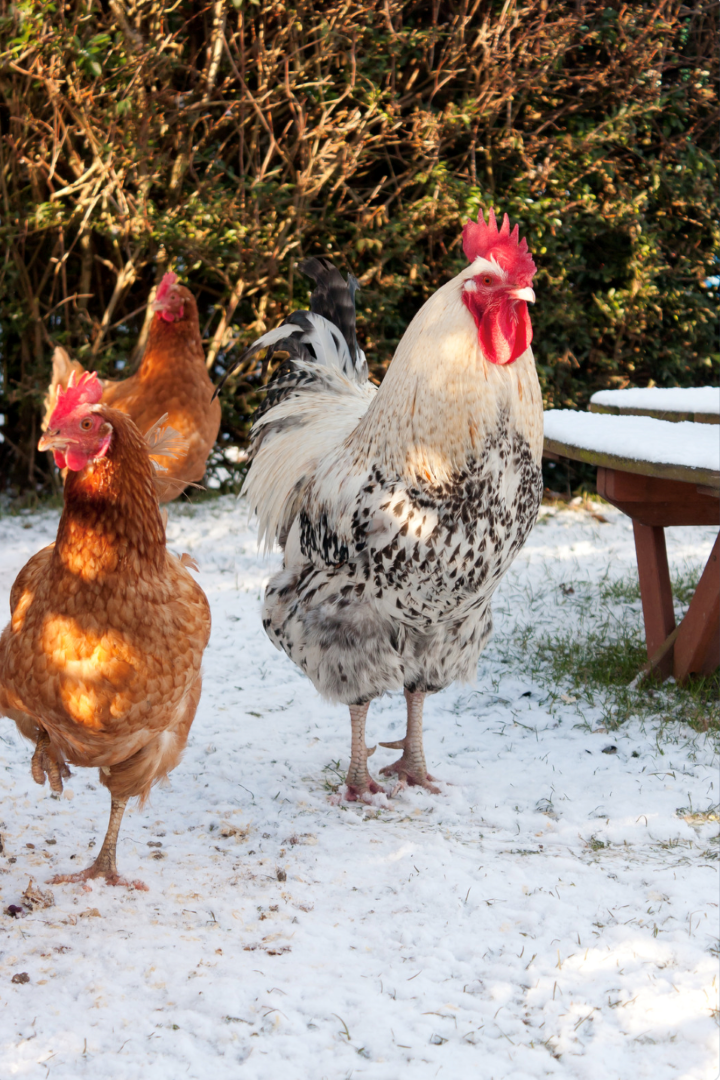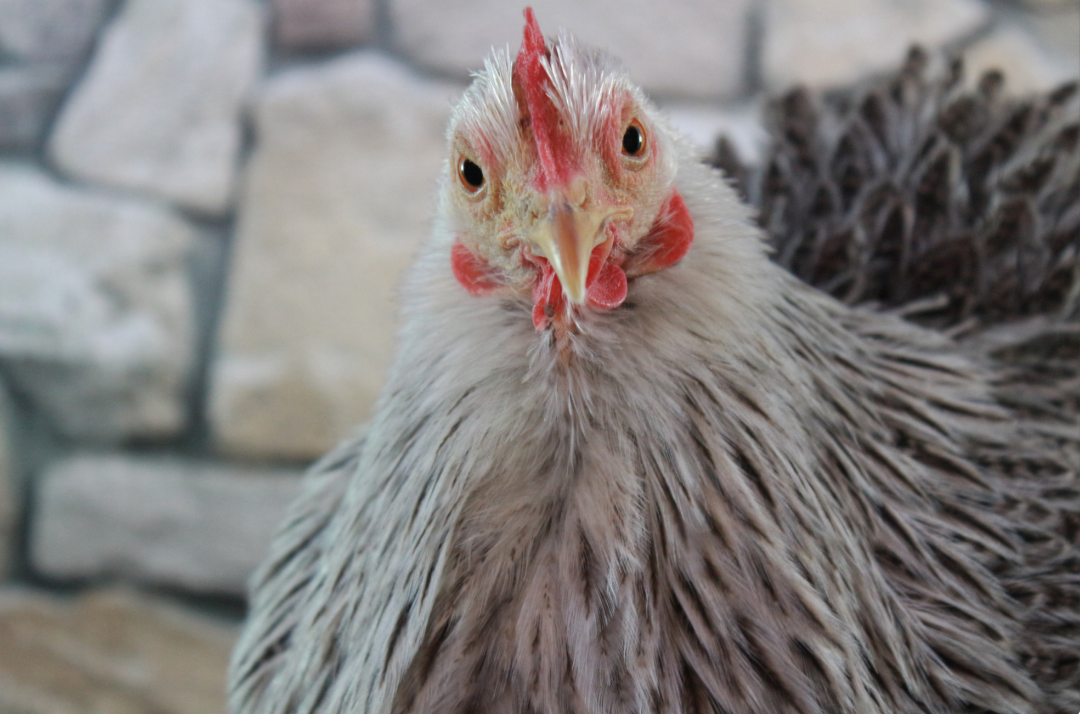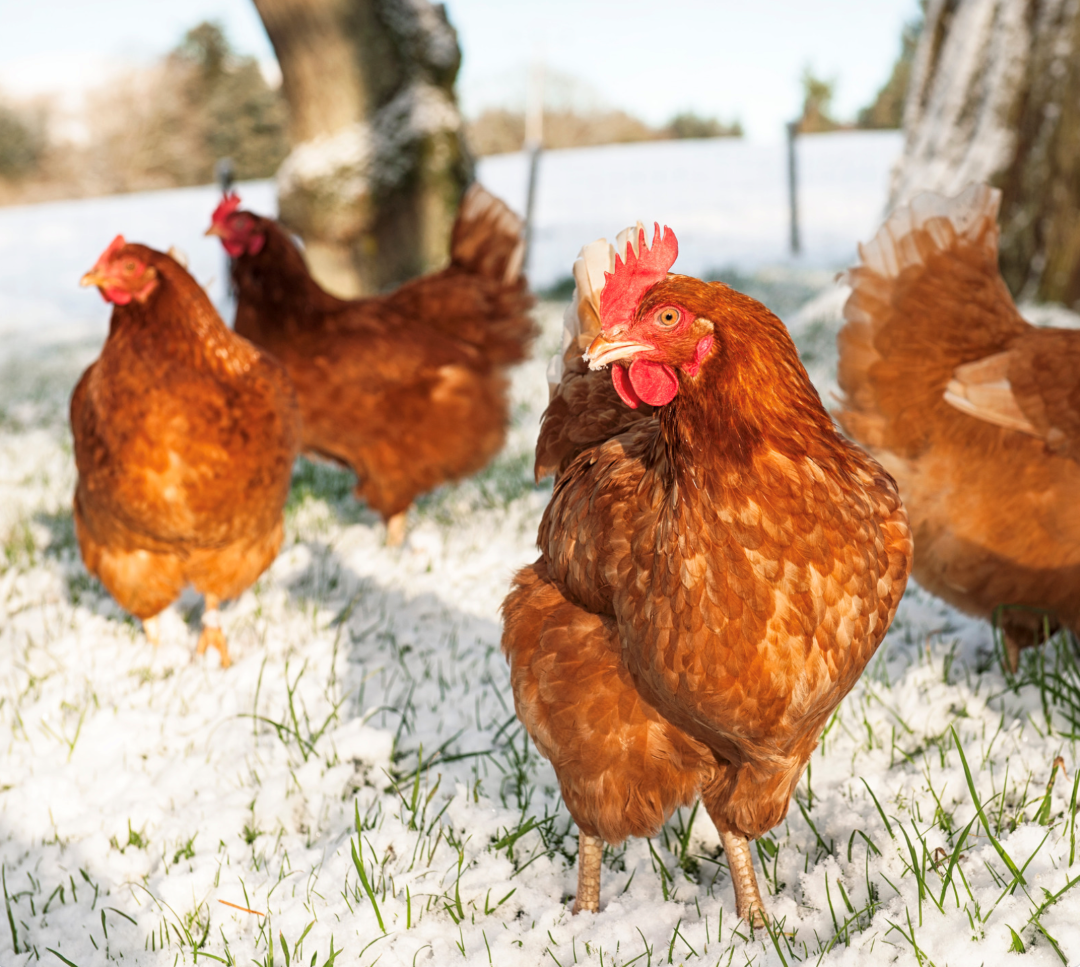This post will teach you exactly how to raise chickens in the winter.
"What do you do with chickens in the winter?" We're going to tell you in this post! As temperatures drop, ensuring the well-being of your flock becomes paramount.
If you've wondered, "What do chickens need in winter?" this comprehensive guide will provide valuable information on creating a cozy and insulated coop, selecting the right bedding, adjusting their diet for colder months, and addressing specific challenges associated with raising chickens in cold weather.
We will even teach you what you may need to do differently if you're raising free range chickens in the winter.
Whether you're a seasoned poultry keeper or a winter chicken care novice, this post will equip you with the knowledge to keep your chickens healthy and thriving during the colder seasons! 😃
We hope you learn everything you need to know through this post on how to raise chickens in the winter!
This post may contain affiliate links. You can read our full disclaimer here.
How to Raise Chickens in the Winter Inside a Coop
Heating your chicken coop in the winter
Can chickens stay outside in the winter? Can chickens survive winter in a coop?
If you're new to raising chickens or homesteading in general, you probably have so many questions about how to properly care for your animals. This is totally normal and just shows that you're going to be a great animal parent! 😃 Chickens can generally tolerate cold weather quite well, but it's essential to provide them with proper care and shelter during the winter months.
Here are some considerations:
1. Insulated Coop: - Ensure that the chicken coop is well-insulated to protect the birds from harsh winds and low temperatures. - Insulate walls and ceiling, and use materials like straw or hay on the floor to provide additional insulation.
2. Ventilation: - While insulation is important, it's equally crucial to maintain proper ventilation to prevent moisture buildup. Moisture can lead to frostbite and respiratory issues. - Install vents that can be adjusted to control airflow without creating drafts directly on the chickens.
3. Roosting Bars: - Chickens prefer to roost at night, especially in colder weather. Provide wide roosting bars so they can huddle together and share body heat.
4. Heating: - Generally, chickens can handle cold temperatures without supplemental heat. However, if the temperatures are extremely low, you might consider providing a safe heat source. - Use caution with heat lamps, as they can be a fire hazard. Ensure they are securely installed and have safety features.
5. Deep Litter Method: - Use the deep litter method in the coop, where bedding material (such as straw or wood shavings) is periodically added instead of completely cleaning out the coop. This creates a composting effect that generates some heat.
6. Water Supply: - Ensure a reliable and non-freezing water supply. Use heated waterers or check water regularly to prevent it from freezing.
7. Feeding: - During cold weather, chickens may need a feed with more calories to maintain their body temperature. Provide a well-balanced and nutritious diet.
8. Monitor Health: - Regularly check your chickens for signs of cold stress, such as frostbite on combs and wattles. If you notice any issues, take appropriate measures promptly.
9. Predator Protection: - Make sure the coop is secure to protect chickens from predators that might be more desperate for food during the winter. It's important to note that different chicken breeds have varying cold tolerance levels. Some breeds are more cold-hardy than others, so consider the specific needs of your flock. Additionally, local climate conditions and temperatures will influence the care requirements for your chickens during the winter.
Can chickens freeze to death? What temperature is too cold for chickens at night?
"What temperature can chickens tolerate in winter?" "Is 10 degrees too cold for chickens?" "Is 20 degrees too cold for chickens?" These are questions we are often asked about raising chickens in the winter!
Yes, chickens can freeze to death. However, chickens are generally quite resilient and can handle cold temperatures well. As a general guideline, temperatures below 0°F (-17°C) are considered extremely cold, and extra precautions should be taken to ensure the comfort and health of chickens.
At these temperatures, risks of frostbite and other cold-related issues increase. Providing proper shelter, insulation, and monitoring your chickens for signs of distress are crucial when temperatures drop significantly.
Adjustments such as adding extra bedding, checking water sources for freezing, and ensuring adequate nutrition can help chickens cope with colder weather.
Do chickens need heat lamps in winter?
In most cases, chickens do not require heat lamps during winter, as they are hardy birds that can handle cold temperatures. They have natural mechanisms, such as fluffing their feathers and huddling together, to generate and retain body heat. Providing a well-insulated coop, proper ventilation, and ample bedding are usually sufficient to keep them comfortable.
However, in extremely frigid conditions, where temperatures drop significantly below freezing, you might consider providing supplemental heat. Heat lamps can be cautiously used, but it's crucial to ensure they are securely installed to prevent fire hazards.
Monitor your chickens for signs of distress, and be mindful of potential issues like overheating or excessive moisture in the coop. It's generally advisable to let chickens acclimate to colder temperatures naturally, but in cases of severe cold, a carefully managed heat source may be considered.
At what temperature do chickens need a heat lamp in winter? How warm should a chicken coop be in the winter?
Chickens are generally quite resilient and can handle cold temperatures without the need for supplemental heat. In fact, they are more adaptable to cold weather than hot weather.
However, there are instances where providing heat becomes necessary. If temperatures consistently drop well below freezing, or if there are extreme cold snaps, a heat lamp may be considered.
It's crucial to observe the behavior of the chickens – if they show signs of distress, such as huddling excessively or experiencing frostbite on combs and wattles, additional heat may be warranted. The ideal temperature for a chicken coop in winter is generally around 30-40°F (-1 to 4°C).
This range helps to prevent freezing without creating an overly warm environment. It's important to strike a balance, as excessive heat can also be detrimental to chickens.
Ensure proper insulation, good ventilation to control moisture, and use bedding materials to help retain heat. Always monitor your chickens closely during extreme weather conditions and adjust as needed.
Additionally, if using heat lamps, take precautions to prevent fire hazards and ensure the safety of your flock. Remember that acclimating chickens to gradual temperature changes is beneficial for their overall resilience to varying weather conditions.
How do I keep my chickens warm without a heater? What is an alternative to a heat lamp for chickens?
If you're wondering "How can I heat my chicken coop in the winter without electricity?" we've got you covered. Keeping chickens warm without a heater or heat lamp involves creating a well-insulated and draft-free environment in the chicken coop.
Here are alternative methods to provide warmth for chickens in winter:
1. Deep Litter Method: - Use the deep litter method by adding layers of straw, hay, or wood shavings to the coop floor. This method generates heat through the decomposition of bedding material, providing natural warmth.
2. Proper Insulation: - Insulate the walls and ceiling of the coop to retain heat. Consider using materials like foam board or reflective insulation.
3. Ventilation: - Maintain proper ventilation to control moisture and prevent condensation, which can lead to frostbite. Adequate airflow is essential for a healthy coop environment.
4. Roosting Bars: - Provide wide roosting bars at different heights to allow chickens to huddle together. Roosting close to each other helps share body heat.
5. Good Bedding: - Use a thick layer of dry bedding material, such as straw or wood shavings, to provide insulation and keep the coop floor dry.
6. Closing Drafts: - Seal any gaps or drafts in the coop to prevent cold air from entering. This helps maintain a more stable and comfortable temperature inside.
7. Natural Sunlight: - Maximize exposure to natural sunlight during the day. Ensure the coop has windows or openings to let in sunlight, which can contribute to warmth.
8. Feeding Considerations: - Provide a well-balanced and nutrient-rich diet. During colder weather, chickens may need additional calories to maintain body temperature.
9. Use of Baffles or Windbreaks: - Install baffles or windbreaks around the coop to protect it from harsh winds. This can help maintain a more stable temperature.
10. Monitoring Health: - Regularly check your chickens for signs of distress or health issues related to the cold. Address any concerns promptly.
Remember, while these methods can help chickens stay warm in winter, it's essential to monitor their behavior and make adjustments as needed based on specific weather conditions. Chickens are generally hardy, and allowing them to acclimate gradually to seasonal changes can contribute to their overall well-being.
Feeding chickens in the winter
What do you feed chickens to keep them warm in the winter?
Feeding chickens a well-balanced and nutritious diet is crucial to help them stay warm in the winter. While specific foods don't directly raise their body temperature, providing the right nutrients supports their overall health and energy levels, contributing to their ability to withstand colder temperatures. Here are some considerations:
1. Increased Caloric Intake: - In colder weather, chickens may require more calories to maintain body temperature. You can achieve this by offering a higher quantity of their regular feed or by providing additional treats like grains and seeds.
2. Complete Poultry Feed: - Choose a complete poultry feed that is formulated to meet the nutritional needs of chickens. Pelleted or crumbled feeds are often preferred, as they prevent selective eating and ensure a balanced intake of nutrients.
3. Protein-Rich Feed: - Ensure the feed has an adequate protein content. Protein is essential for maintaining body condition, especially during the winter when chickens may not have access to as many insects and fresh greens.
4. Supplemental Grains: - Consider supplementing their diet with grains like corn, barley, or oats. Grains provide energy and can contribute to increased body heat through digestion.
5. Fruits and Vegetables: - Offer fruits and vegetables as treats. While they don't directly contribute to warmth, they provide vitamins and minerals that support overall health.
6. Mealworms or Black Soldier Fly Larvae: - Insects like mealworms or black soldier fly larvae are protein-rich treats that can be given to chickens. They can be particularly beneficial during winter when natural insect availability is limited.
7. Provide Grit: - Ensure chickens have access to grit, which aids in digestion. This is especially important when offering grains and treats.
8. Fresh, Clean Water: - Make sure chickens have access to fresh, unfrozen water. Hydration is crucial for their overall health, and dehydration can make them more susceptible to cold stress. Remember to monitor your chickens' body condition and adjust their diet accordingly. If you have concerns about their nutritional needs during winter, consulting with a poultry nutritionist or a veterinarian can provide personalized advice based on your specific circumstances.
Bedding for chickens in the winter
What is the best bedding for a chicken coop in the winter?
Choosing the best bedding for a chicken coop in winter involves selecting materials that provide insulation, moisture control, and comfort for the chickens. Some commonly used bedding options include:
1. Straw: - Straw is a popular choice for chicken coop bedding. It provides good insulation, is relatively inexpensive, and allows for good airflow. Make sure it's dry and clean to prevent mold.
2. Wood Shavings: - Kiln-dried wood shavings are absorbent and can help control moisture in the coop. They provide a comfortable surface for chickens and are often easy to find at farm supply stores.
3. Hay: - Hay is another option, though it may be less preferred than straw as it can be messier and may mold more quickly. It still provides some insulation and is better suited for coops with good ventilation.
4. Pine Shavings: - Pine shavings are a good alternative to cedar shavings, which can have aromatic oils that may be irritating to chickens. Pine shavings are absorbent and provide a soft surface.
5. Hemp Bedding: - Hemp bedding is becoming more popular for chicken coops. It is highly absorbent, controls odors well, and has natural antimicrobial properties.
6. Deep Litter Method: - The deep litter method involves allowing bedding material to accumulate in the coop over time. Regularly add fresh straw, wood shavings, or other suitable materials. The decomposing litter generates heat, contributing to a warmer coop. When using any bedding material, it's essential to keep the coop clean and dry. Regularly remove soiled bedding and add fresh material to maintain a healthy environment. Ensure proper ventilation to prevent moisture buildup, which can lead to issues like frostbite and respiratory problems. Choose bedding based on availability, cost, and the specific needs of your flock. The goal is to provide a comfortable, dry, and well-insulated space for your chickens during the winter months.
How to Raise Free Range Chickens in the Winter
What do you need for free range chickens in winter?
Curious how to raise chickens in the winter if they're free range? Free-range chickens in winter require some additional considerations to ensure their well-being in colder temperatures. Here's what you need for free-range chickens during the winter:
1. Shelter: - Provide a well-insulated and draft-free coop or shelter where chickens can roost and find refuge from cold winds and precipitation.
2. Roosting Bars: - Install wide and comfortable roosting bars inside the shelter. Chickens tend to huddle together on roosts at night, sharing body heat to stay warm.
3. Ventilation: - Ensure proper ventilation in the coop to prevent moisture buildup. Good airflow helps maintain a healthy environment and reduces the risk of respiratory issues.
4. Windbreaks: - Create windbreaks around the free-range area. This can be achieved with natural barriers like trees, shrubs, or man-made structures to protect chickens from harsh winds.
5. Water Supply: - Provide access to fresh, unfrozen water. Consider using heated waterers to prevent water from freezing, ensuring that chickens stay hydrated.
6. Additional Feed: - During colder weather, chickens may require extra calories to maintain body temperature. Increase their feed, including grains and protein-rich treats, to provide additional energy.
7. Natural Foraging Opportunities: - Even in winter, try to provide opportunities for natural foraging. Scatter grains or seeds in the outdoor area to encourage chickens to scratch and peck for food.
8. Dust Bath Area: - Allow chickens to dust bathe, even in winter. Provide a designated area with dry soil and diatomaceous earth for them to maintain their plumage and discourage mites.
9. Monitor Health: - Regularly check your free-range chickens for signs of distress, cold stress, or health issues. Adjust their environment or provide additional care if needed.
10. Predator Protection: - Ensure that the free-range area is secure to protect chickens from predators. Winter may increase the desperation of some predators, so extra precautions are essential.
11. Natural Sunlight Exposure: - Maximize exposure to natural sunlight during the day. Sunlight is beneficial for chickens' overall health and can contribute to their well-being in winter. By providing proper shelter, ensuring access to food and water, and monitoring their health, you can help your free-range chickens thrive during the winter months. Adjustments to their care may be needed based on the severity of the weather conditions in your area.
We hope you found this post on how to raise chickens in the winter to be helpful! If you found this insightful, you should go read our post on Mistakes to Avoid When Raising Chickens for Eggs. Also, keep in mind that raising baby chicks is a lot different than raising adult chickens, so make sure you learn the different needs for both!




